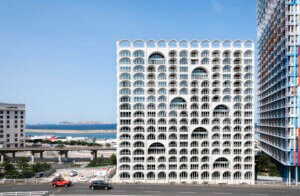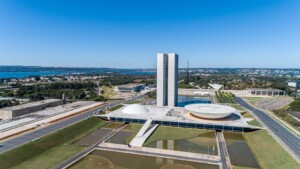Nearly a decade after his death, what is being billed as the final drawn project of Oscar Niemeyer has been completed in the very same country where, while living in exile in the 1960s, the Brazilian architect also realized his first European work: the Headquarters of the French Communist Party in Paris’s 19th arrondissement.
The settings of Niemeyer’s first French commission and his last couldn’t be more different: the bustling right bank of the River Seine and, now, an idyllic vineyard and contemporary art campus nestled in the rolling hills of Provence. The newly realized work, a characteristically curvy glazed pavilion flanked by a reflecting pool and featuring a 4,000-square-foot gallery and a drum-shaped, 60-seat auditorium, serves as the newest architectural attraction at the 500-acre Château La Coste wine estate, where the sinuous structure joins commissions by the likes of Richard Rogers (a cantilevered gallery space), Renzo Piano (a non-cantilevered gallery space), Frank Gehry (a music pavilion), and Jean Nouvel (a wine cellar), along with multiple works by Tadao Ando including a chapel and large visitors center and cafe.
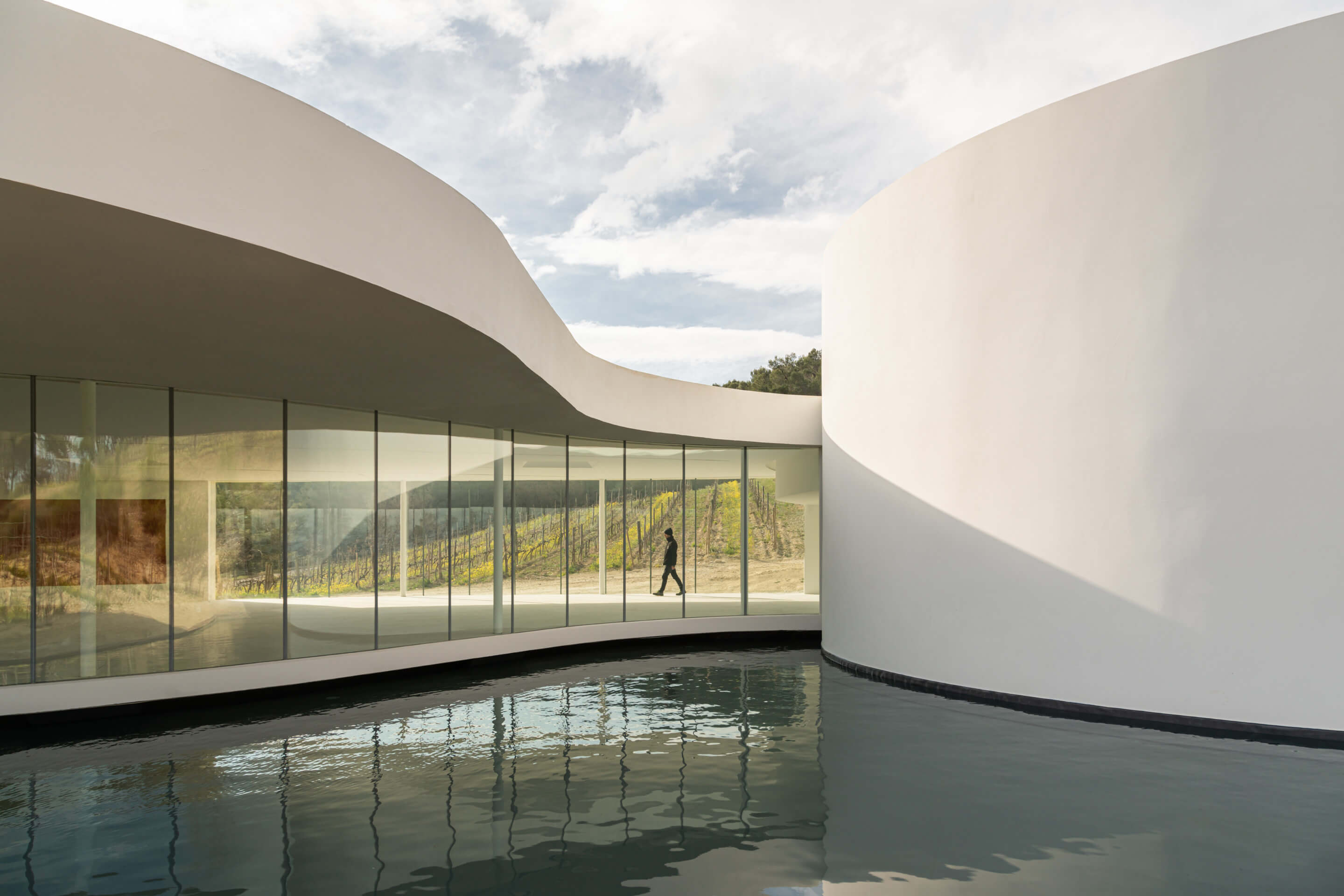
Also peppered throughout the sprawling estate are permanent, site-specific works by Kengo Kuma, Jenny Holzer, Richard Serra, Andy Goldsworthy, Hiroshi Sugimoto, Louise Bourgeois, Alexander Calder, and Tracey Emin, among many others.
The newly inaugurated Niemeyer pavilion will host its first exhibitions and events this June.
The pavilion at Château La Coste was conceived between 2010, when the Rio de Janeiro-born Pritzker Prize laureate was first invited to take on the project at the age of 103, and 2013. Niemeyer died in Rio in December 2012, just shy of his 105th birthday. As noted by Château La Coste in a press release unveiling the pavilion, it took Niemeyer more than a year to finalize the design and settle on an ideal site at the estate. Technical visits were made by his team beginning in 2011, the same year Château La Coste, which is located near the city of Aix-en-Provence, first opened to the public.
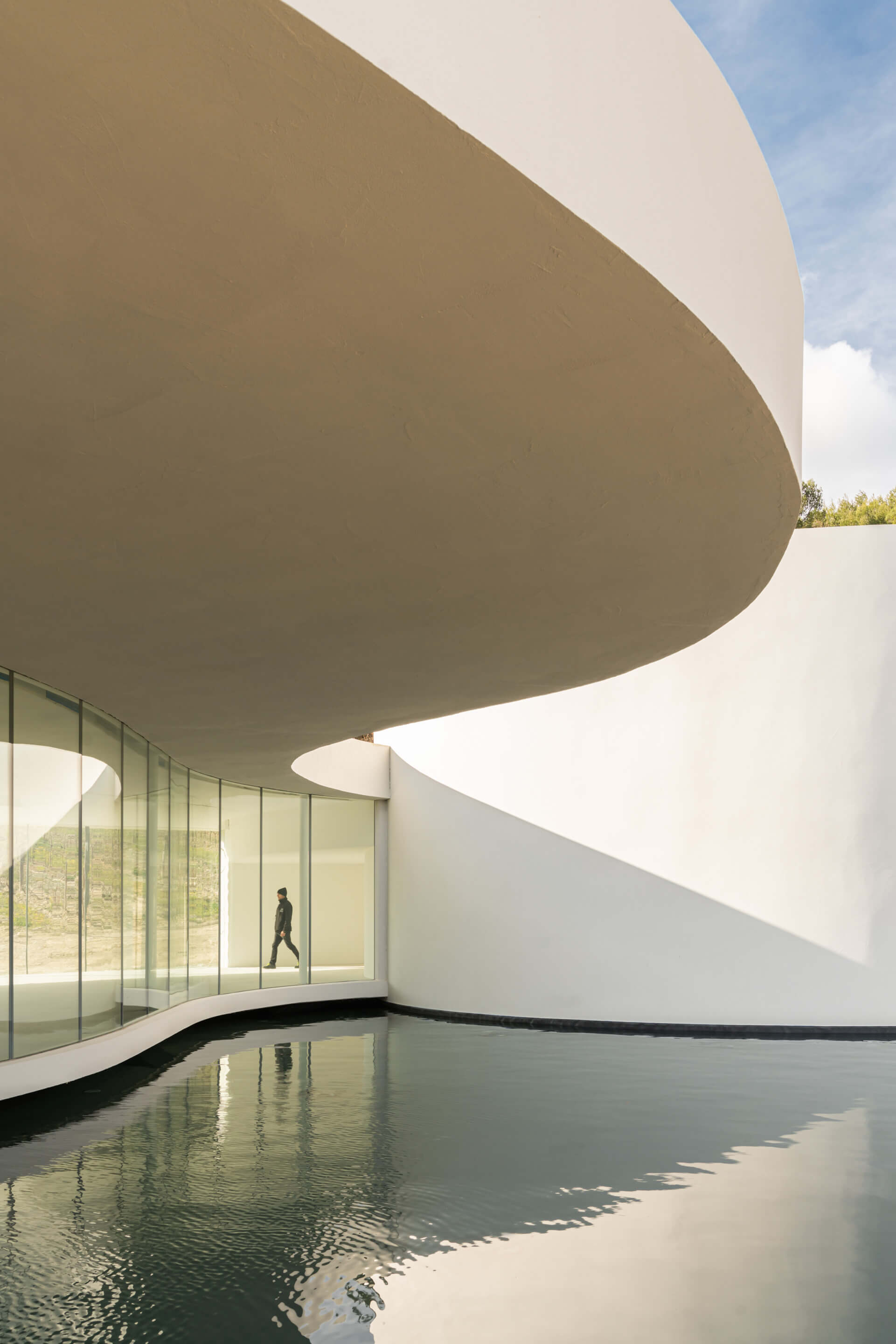
Château La Coste described the pavilion as Niemeyer’s “final gift” to his longtime adopted home of France. In addition to Headquarters of the French Communist Party, completed in 1965 and described by Niemeyer as being one of his favorite works, other major completed French projects include the Bobigny Labor Exchange (1972), Le Maison de la Culture (1982) in Le Havre, Normandy, and the headquarters for L’Humanité (1989) in Saint-Denis. Shortly following the 1964 Brazilian coup d’état, Niemeyer—a lifelong atheist and member of the Brazilian Communist Party—was forced into exile in Paris. Here, he established an architectural office and took on a range of international projects. He returned to his native Brazil in the mid-1980s following the fall of the country’s military dictatorship.
“It was an absolute pleasure to work on this project,” said Niemeyer of the Château La Coste commission. “The location is very beautiful and a pleasant, peaceful environment. The pavilion had to be a light construction adapted to the landscape as well as the vegetation. The structure is at home in this setting and will be a joy to walk around.”
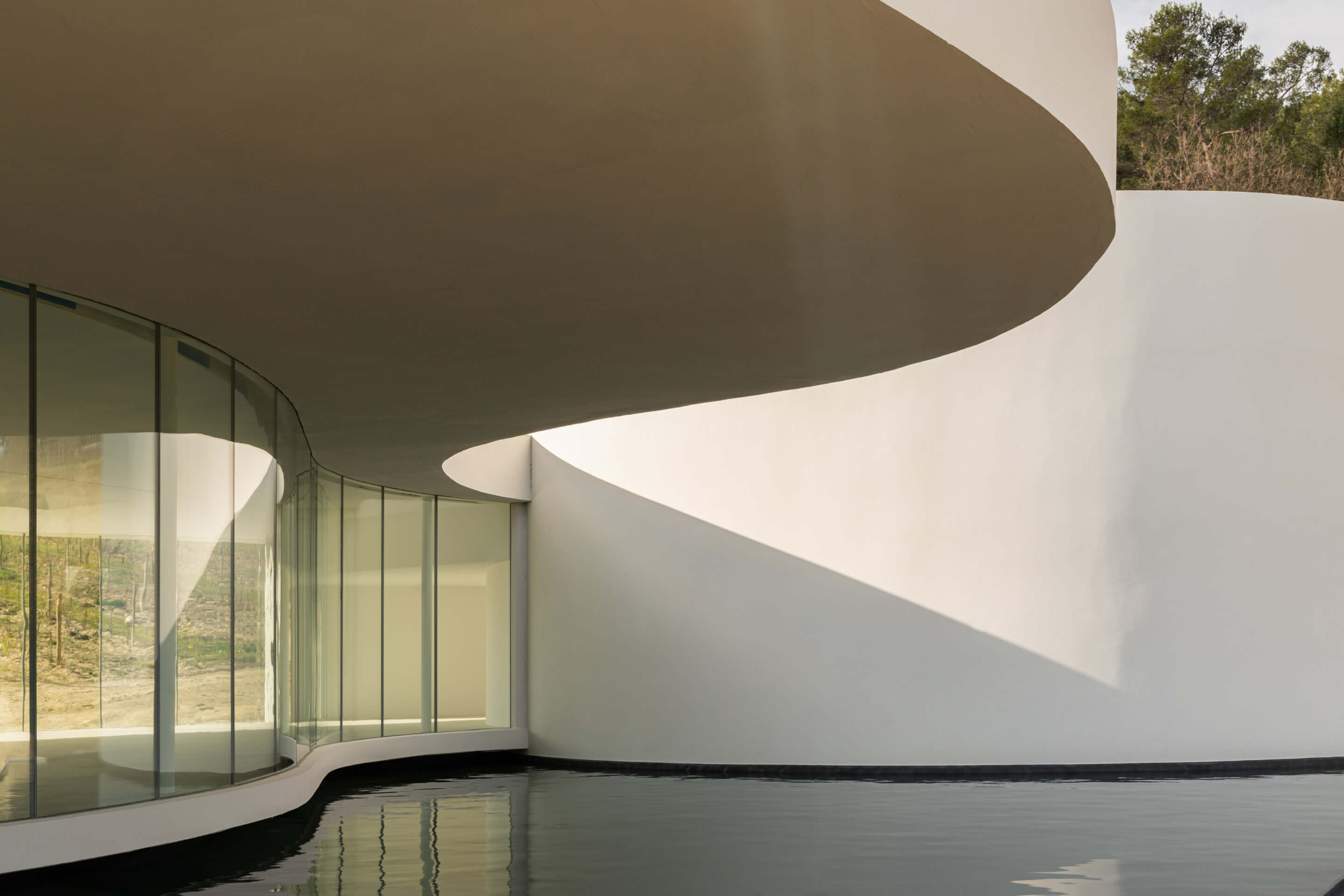
The Niemeyer Pavilion at Château La Coste isn’t the only late-in-life work of Niemeyer to be realized posthumously in recent years. In the summer of 2020, a globular, half-glazed concrete structure dubbed the Niemeyer Sphere was inaugurated at Germany’s Techne Sphere Leipzig. Realized as an addition to a historic brick factory building, the Niemeyer Sphere is used as a restaurant and event space.








